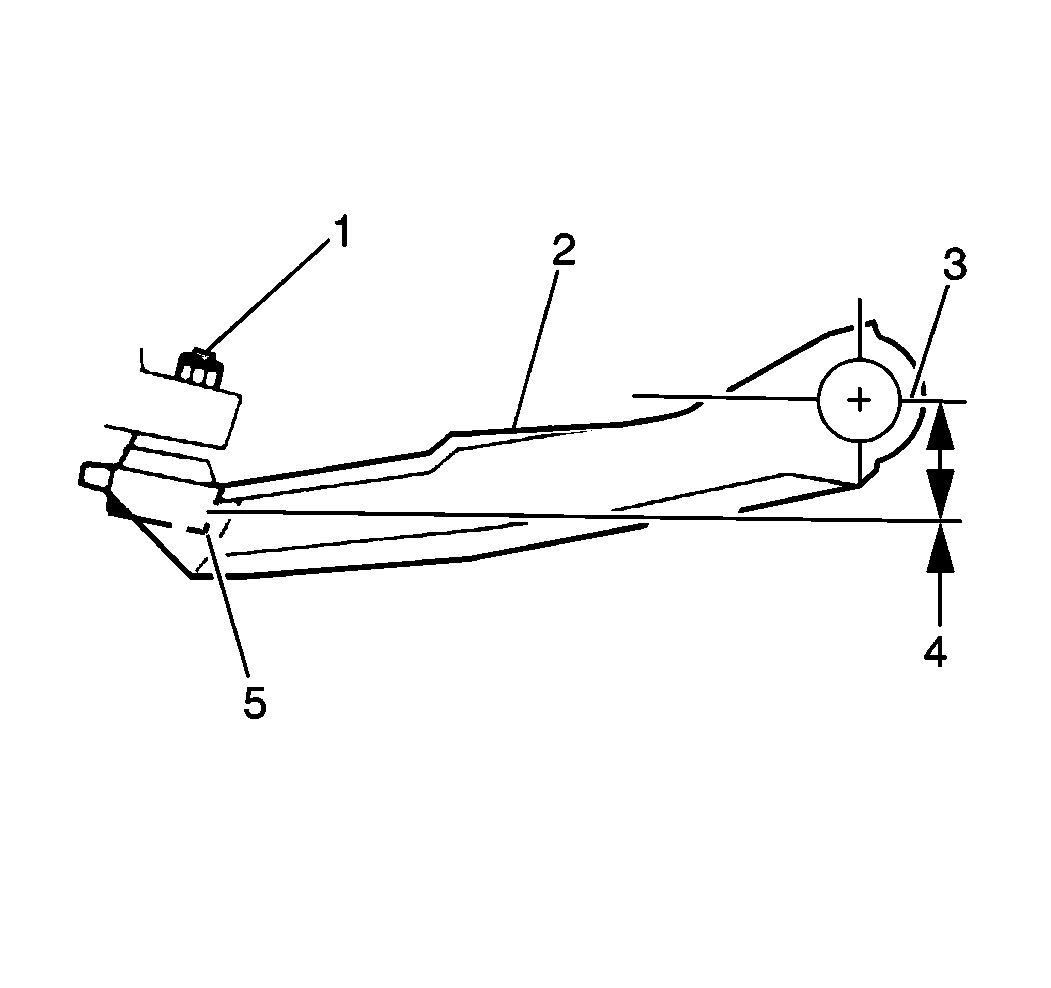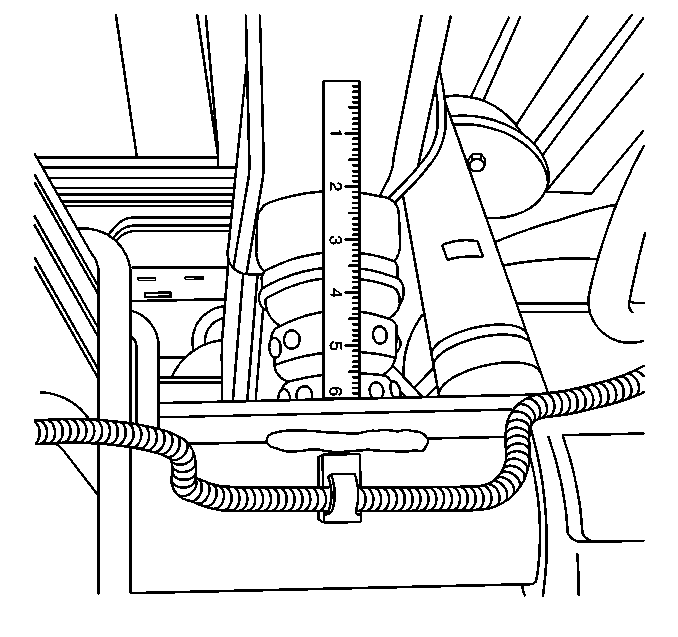Trim Height Measurements
Trim height is a predetermined measurement relating to vehicle ride
height. Incorrect trim heights can cause bottoming out over bumps, damage
to the suspension components and symptoms similar to wheel alignment problems.
Check the trim heights when diagnosing suspension concerns and before
checking the wheel alignment.
Perform the following before measuring the trim heights:
- Set the tire pressures to the pressure shown on the certification
label. Refer to
Vehicle Certification Label
in General Information.
- Check the fuel level. Add additional weight if necessary to simulate
a full tank.
- Make sure the rear compartment is empty except for the spare tire.
- Make sure the vehicle is on a level surface, such as an alignment
rack.
- Close the doors.
- Close the hood.
- All dimensions are measured vertical to the ground. Trim heights
should be within 13 mm (0.5 in) to be considered correct.
Z Height Measurement
The Z height dimension measurement determines the proper ride height
for the front end of the vehicle. Vehicles equipped with torsion bars use
a adjusting arm in order to adjust the Z height dimension. Vehicles without
torsion bars have no adjustment and could require replacement of suspension
components.
- Lift the front bumper of the vehicle up about 38 mm (1.5 in).
- Gently remove your hands.
- Allow the vehicle to settle into position.
- Repeat the jouncing operation 2 more times for a total of 3 times.

- Measure from the pivot
bolt center line (3) down to the lower corner (5) of the lower ball joint
(1) in order to obtain the Z height measurement (4).
- Push the front bumper of the vehicle down about 38 mm (1.5 in).
- Gently remove your hands.
- Allow the vehicle to rise.
- Repeat the operation for a total of 3 times.
- Measure the Z dimension.
- The true Z height dimension number is the average of the high
and the low measurements. Refer to
Trim Height Specifications
.
D Height Measurement
The D height dimension measurement determines the proper rear end ride
height. There is no adjustment procedure. Repair may require replacement of
suspension components.
- With the vehicle on a flat surface, lift upward on the rear bumper
38 mm (1.5 in).
- Gently remove your hands.
Allow the vehicle to settle into position.
- Repeat the jouncing operation 2 more times for a total of 3 times.

- Measure the D height by
measuring the distance between the rear axle and the jounce bumper (without
Auxiliary Springs only).

- Measure the D height
by measuring the distance between the rear axle and the frame (with auxiliary
springs only).
- Push the rear bumper downward to 38 mm (1.5 in).
- Gently remove your hands.
Allow the vehicle to settle into position.
- Repeat the jouncing operation 2 more times for a total of 3 times.
- Measure the D height dimension.
- The true D height dimension number is the average of the high
and the low measurements. Refer to
Trim Height Specifications
.
- If these measurements are out of specifications, inspect for the
following conditions:
| • | Sagging front suspension |
| • | Sagging rear leaf springs |
| • | Worn rear suspension components, such as leaf spring bushings. |
| • | Improper tire inflation |
| • | Improper weight distribution |



